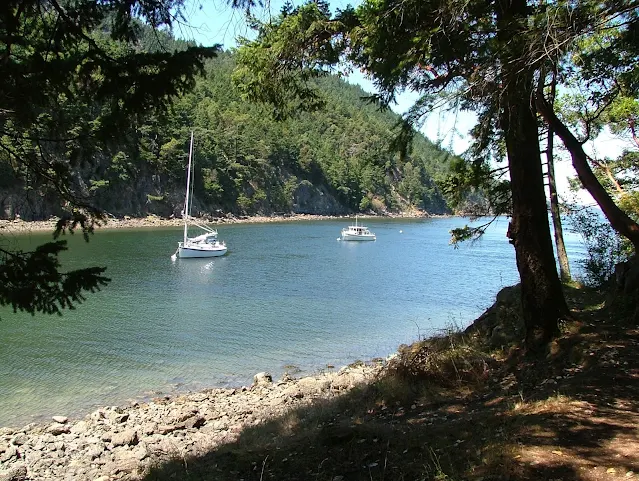This may look like an unpleasant circumstance waiting for our return, but it is exactly what we planned.
Let me explain. When we arrived many hours earlier at a much lower tide, we beached the dinghy and walked away just like so many other times. Knowing the rising tide would float our boat, and we were going for an all day hike I ran my line all the way up to the permanent driftwood pile, above the high water mark. Its true the dinghy will eventually float free and may wash up on shore, but the weather is fine and wakes are frowned upon at Echo Bay.
If I was really worried I could have deployed a light anchor that does not dig in, then when we returned I would have simply hauled it all to shore dragging the anchor with it.
So what, you say?
The point is, when you outfit your shore boat you should anticipate needing a really long rope just in case you need it. My current dinghy has a fifty foot floating line, and if I can't reach something solid, I go find a dog-bone shaped rock and carry it to where I want to tie up. Some skippers carry a small dinghy anchor and rode, then simply carry it up the beach.
Having your dinghy float away doesn't always mean you will lose it forcing you and your crew to swim out to your boat. In popular anchorages someone will probably come to your rescue.
Now this next point is very important. Conditions at the shoreline may change from flat glassy water to two foot waves in just minutes. A far off storm can send waves your way, or a ship may pass by. The resulting pounding waves may flood your dinghy or seriously damage it. With this in mind there will be times and places where you should carry your dinghy up the beach to safety. It is very reassuring knowing your shore boat will be there waiting for you when you return.










































